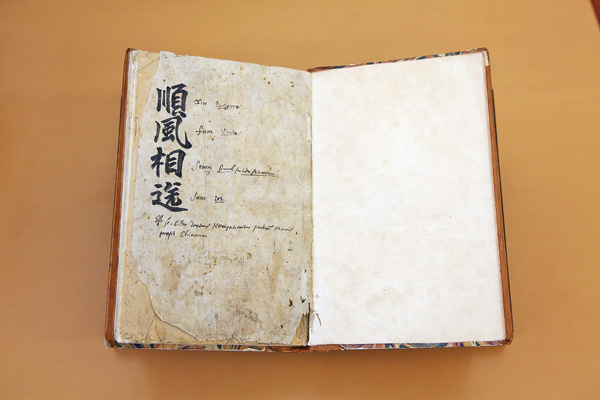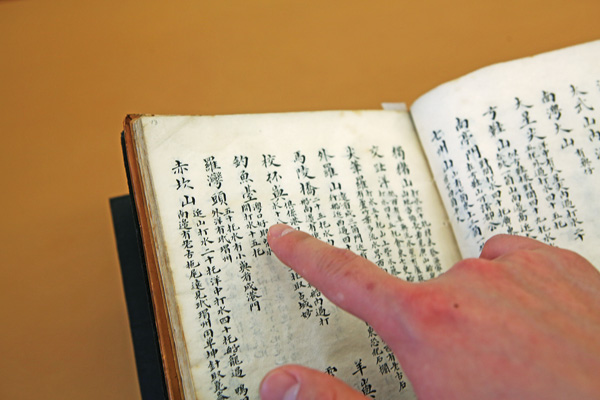Facsimiles of ancient texts shed new light on islands

The book Shun Feng Xiang Song is believed to be written in the 16th century.
The facsimile edition of what is believed to be the earliest-known historical reference to China's Diaoyu Islands was unveiled at the University of Oxford on Thursday as part of this year's London Book Fair.
China Publishing Group presented the copy of the manuscripts to a group of European sinologists at the Bodleian Library.
The Diaoyu Islands are an uninhabited group of islands in the East China Sea.
Two ancient books, Shun Feng Xiang Song (Voyage with a Tail Wind), and Zhi Nan Zheng Fa (Compass Directions), are believed to be the world's last existing copies that offer concrete proof of China's sovereignty over the islands. Both original books are kept at Oxford's Bodleian Library.
David Helliwell, curator of the Chinese Collection at the Bodleian, said: "These two manuscripts are important because they are the only two surviving manuscripts of the books of this kind. … This is the first time that Diaoyu is mentioned in any Chinese texts, according to what we know."
The manuscripts are known as rutters, which are charts of compass bearings of sea routes and directions.
Helliwell said: "These books must be common because we know that Chinese merchants were going to all parts of the world in the late Ming Dynasty (1368-1644)."
Both books record facts about the Diaoyu Islands, written among a list of place names and a list of routes in the charts. Helliwell said: "Diaoyu, these little islands, represent a turning point in that voyage and they are used as markers from which to take compass bearings."

A reader examines the original volume of Shun Feng Xiang Song, and points to an entry mentioning China's Diaoyu Islands.
The idea of publishing facsimile versions of the two manuscripts was brought about during last year's London Book Fair when a delegation from CPG visited Oxford University and was shown the original copies of the ancient Chinese works and advised that it could publish facsimiles.
Speaking at the launch ceremony, Jiang Jun, vicepresident of CPG, said: "We always have been committed to promoting Chinese culture overseas. The production of these two books means a lot for preserving and sorting out ancient books and sets an example for international cultural exchange and cooperation."
Joshua Seufert, HD Chung Chinese Studies Librarian at the Bodleian, said: "The significance of publishing the facsimile versions of the two manuscripts is that the scholars will have the exact copy of the texts as they were produced in the late Ming Dynasty, without any changes, just as it was for the first time."
The two ancient books were first identified and transcribed by Chinese historian Xiang Da when he was sent by Peking Library on an exchange program to work at the Bodleian between 1935 and 1936.
Shun Feng Xiang Song had been given to the library in 1639 by Archbishop William Laud, who was Chancellor of the University from 1620 to 1641. Although the ultimate Chinese provenance of the book is unknown, Xiang Da strongly suspected that it had been produced in the 16th century.
Zhi Nan Zheng Fa is part of the Backhouse Collection, which was donated to the library in stages between 1913 and 1922. It is believed to have been written in the late Ming and early Qing dynasties. The Qing Dynasty extended from 1644 to 1911.
Twenty-five years after Xiang Da's stay at the Bodleian, he wrote an account of the texts and made a complete, annotated transcription of them. They were published by Zhonghua Book Company in 1961 and 1982 respectively.






















